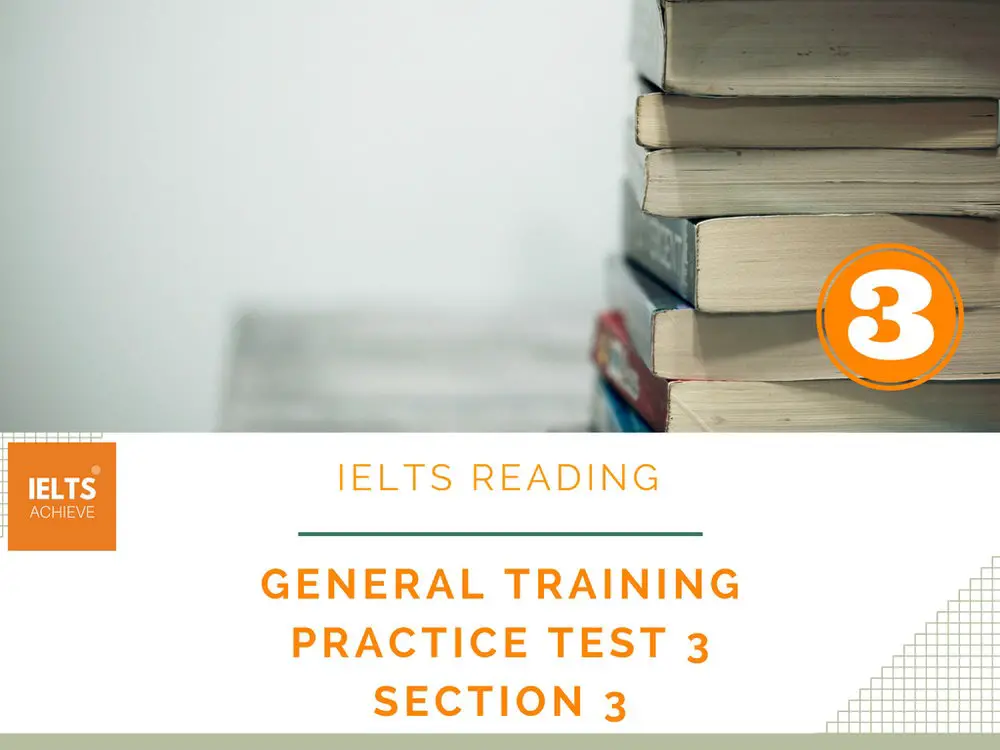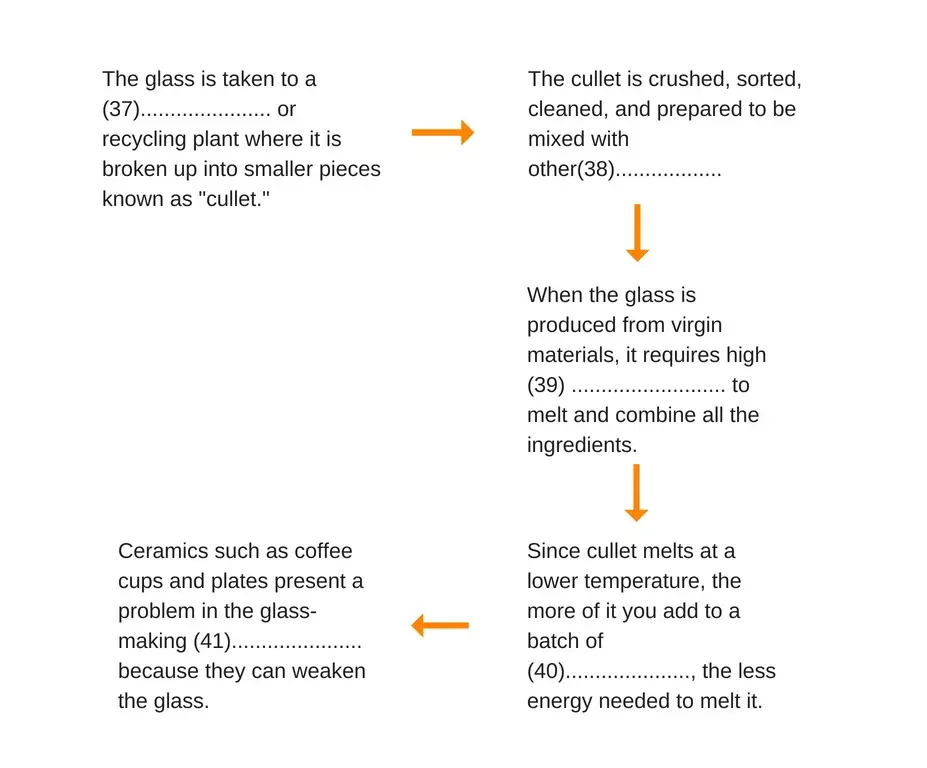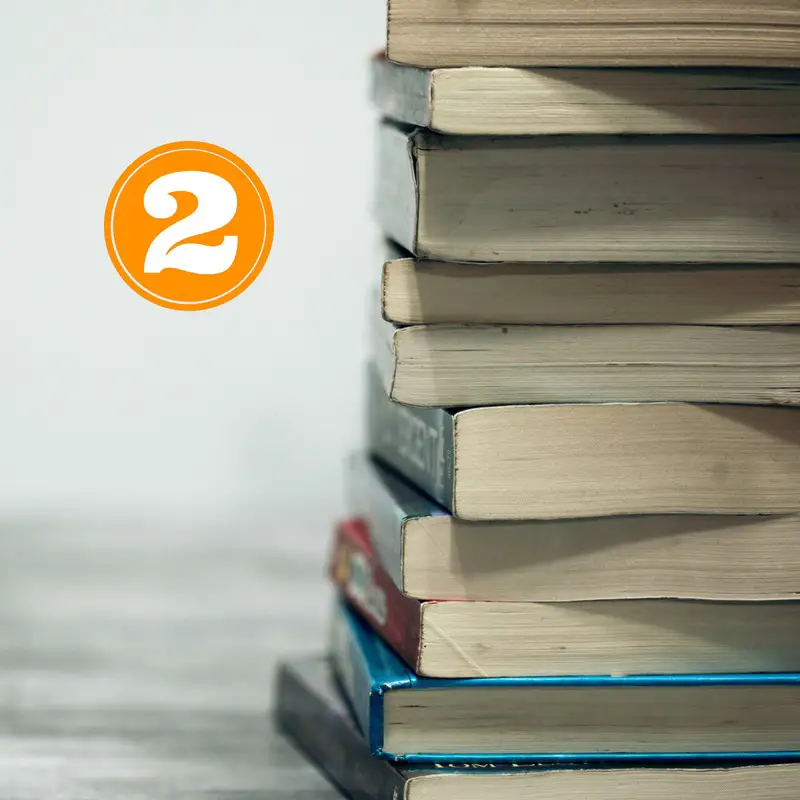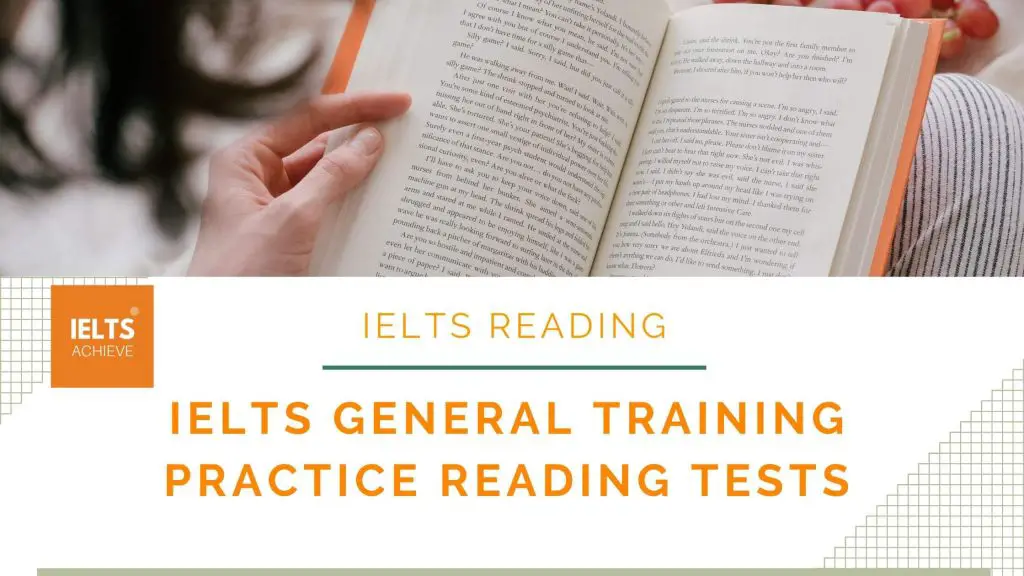
Practice the reading test section below or purchase an easy to print out PDF, which includes all 3 test sections for Reading Test 4 here.
There is also an IELTS General Training Practice Test PDF download that includes all 4 practice tests.
With each test, you get the following >
- PDF for each section of the reading test.
- PDF explaining the reading test band scores.
- PDF example of a reading test answer sheet.
READING SECTION 3 – QUESTIONS 30-41
Recycling Glass
A – Recycling Glass
Most glass bottles and jars produced in the United States now contain at least 27% recycled glass – which also saves on energy to produce glass made from new materials. Some glass cannot be made into other products, or doing so is not economically feasible. If your local recycler doesn’t participate in glass recycling, it’s due to the market for that glass being very small or non-existent. However, if glass recycling is available, it’s important to keep in mind as you recycle that even small amounts of some materials mixed in can contaminate entire loads. Find out more about the types of glass and how they are recycled below.
B – Clear Glass
About 61% of glass containers produced in this country are clear. Clear glass is made of a combination of silica (sand), soda ash, and limestone. Marketing professionals often prefer clear glass containers because they make the product inside visible. However, the clear glass may cause some products to degrade because of light exposure. That’s why about 39% of the glass produced is coloured. Clear glass is sometimes used for beverages. More often, it’s used to package solids or thick liquids, such as pasta sauce, that may not be sensitive to light.
C – Brown Glass
About 31% of glass containers produced in this country are brown in colour. To produce brown glass, the manufacturer adds nickel, sulfur and carbon to molten glass. The “brown” in the glass cannot be removed. Thus, brown bottles can be used only to make other brown bottles. Brown glass protects the container’s contents from direct sunlight, thus preserving freshness and flavour. It is the most common colour used for beer bottles.
D – Green Glass
About 7% of glass containers produced in this country are green in colour. To produce green glass, the manufacturer adds iron, chromium or copper to molten glass. Green glass comes in a variety of shades. The “green” cannot be removed. Thus, green bottles can be used only to make other green bottles. Green glass helps keep sunlight and temperature from affecting the contents, which explains why it is often used in the manufacture of wine bottles.
E – More About Recycling Glass
The glass is taken to a manufacturing or recycling plant where it is broken up into smaller pieces known as “cullet.” The cullet is crushed, sorted, cleaned, and prepared to be mixed with other raw materials. When the glass is produced from virgin materials, it requires high temperatures to melt and combine all the ingredients. Since cullet melts at a lower temperature, the more of it you add to a batch of raw materials, the less energy needed to melt it.
Ceramics such as coffee cups and plates present a problem in the glass-making process because they can weaken the glass. Even a small amount of ceramics can contaminate a whole batch of glass and cost the glassmaker millions of dollars.
F – What Not To Recycle
Not all glass can be recycled. The following items should not be placed in your recycling bin:
- Any glass contaminated with stones, dirt, and food waste
- Ceramics, such as dishware, ovenware, and decorative items.
- Heat-resistant glass, such as Pyrex.
- Mixed colours of broken glass.
- Mirror or window glass.
- Metal or plastic caps and lids.
- Crystal.
- Light bulbs: Find out how to recycle here.
- Cathode-ray tubes (CRTs) found in some televisions and computer monitors. Find out how to recycle here.
Questions 30-36
Complete the summary below of the first two paragraphs of the Reading Passage.
Choose ONE OR TWO WORDS from the Reading Passage for each answer.
Write your answers in boxes 30-36 on your answer sheet.
not all (30)………………… can be used again and made into other objects. This must be, separated and cleaned before recycling and if any of the different types of glass are mixed, they can (31) …………………….. large amounts of the product. Transparent glass is often used by many (32)……………………… as they are pleasing to look at and easy to use when trying to sell products to customers. This type of glass is made from three different materials combined, including; (33)……………., (34)………………….. and (35)…………………….. Using see-through containers for some items may cause them to deteriorate, so more often (36) ……………………… glass is used.
Questions 37-41
Look at paragraphs C, D, E and F and, using the information in the passage, complete the flow chart below.
Write your answers in boxes 37-41 on your answer sheet. Use ONE OR TWO WORDS for each answer.

General Training Reading Band Scores
We hope you found this post useful in helping you to study for the IELTS Test. If you have any questions please let us know in the comments below or on the Facebook page.
The best way to keep up to date with posts like this is to like us on Facebook, then follow us on Instagram and Pinterest.
If you need help preparing for the IELTS Test, join the IELTS Achieve Academy and see how we can assist you to achieve your desired band score. We offer an essay correction service, mock exams and online courses.
Answers >
Questions 30-36
30 – Glass
31 – Contaminate
32 – Marketing professionals
33 – Silica (sand)
34 – Soda Ash
35 – Limestone
36 – Coloured
Questions 37-41
37 – Manufacturing
38 – Raw Materials
39 – Temperatures
40 – Raw Materials
41 – Process

